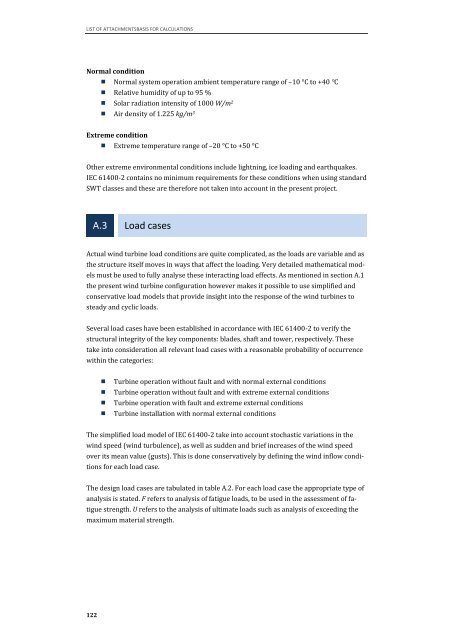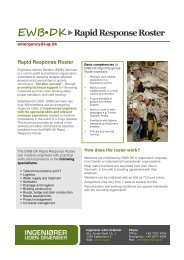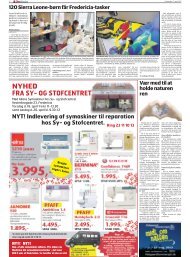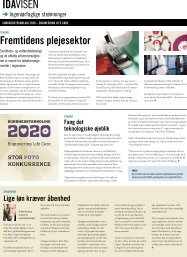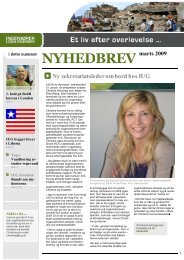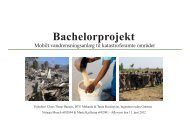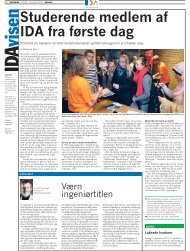You also want an ePaper? Increase the reach of your titles
YUMPU automatically turns print PDFs into web optimized ePapers that Google loves.
LIST OF ATTACHMENTSBASIS FOR CALCULATIONS<br />
Normal condition<br />
122<br />
� Normal system operation ambient temperature range of –10 °C to +40 °C<br />
� Relative humidity of up to 95 %<br />
� Solar radiation intensity of 1000 W/m 2<br />
� Air density of 1.225 kg/m 3<br />
Extreme condition<br />
� Extreme temperature range of –20 °C to +50 °C<br />
Other extreme environmental conditions include lightning, ice loading and earthquakes.<br />
IEC 61400-2 contains no minimum requirements for these conditions when u<strong>sin</strong>g standard<br />
SWT classes and these are therefore not taken into account in the present project.<br />
A.3 Load cases<br />
Actual wind turbine load conditions are quite complicated, as the loads are variable and as<br />
the structure itself moves in ways that affect the loading. Very detailed mathematical mod-<br />
els must be used to fully analyse these interacting load effects. As mentioned in section A.1<br />
the present wind turbine configuration however makes it possible to use simplified and<br />
conservative load models that provide insight into the response of the wind turbines to<br />
steady and cyclic loads.<br />
Several load cases have been established in accordance with IEC 61400-2 to verify the<br />
structural integrity of the key components: blades, shaft and tower, respectively. These<br />
take into consideration all relevant load cases with a reasonable probability of occurrence<br />
within the categories:<br />
� Turbine operation without fault and with normal external conditions<br />
� Turbine operation without fault and with extreme external conditions<br />
� Turbine operation with fault and extreme external conditions<br />
� Turbine installation with normal external conditions<br />
The simplified load model of IEC 61400-2 take into account stochastic variations in the<br />
wind speed (wind turbulence), as well as sudden and brief increases of the wind speed<br />
over its mean value (gusts). This is done conservatively by defining the wind inflow condi-<br />
tions for each load case.<br />
The design load cases are tabulated in table A.2. For each load case the appropriate type of<br />
analysis is stated. F refers to analysis of fatigue loads, to be used in the assessment of fa-<br />
tigue strength. U refers to the analysis of ultimate loads such as analysis of exceeding the<br />
maximum material strength.


